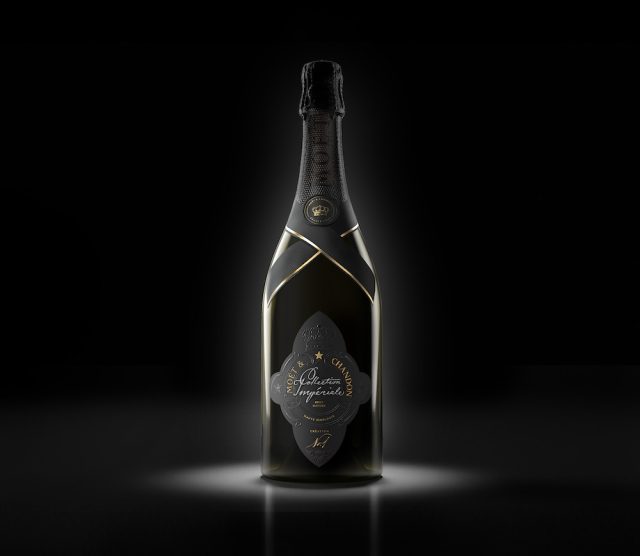This website uses cookies so that we can provide you with the best user experience possible. Cookie information is stored in your browser and performs functions such as recognising you when you return to our website and helping our team to understand which sections of the website you find most interesting and useful.
Moët launches new prestige cuvée
Moët & Chandon has launched a ‘new’ prestige cuvée called Collection Impériale Création No. 1 to celebrate the house’s 280th anniversary, and which effectively replaces the discontinued MC111.

The wine is an assemblage of seven different vintages with the base, the vibrantly fresh 2013 Grand Vintage aged in stainless steel tanks, accounting for 42.5% of the blend. It is complemented by five older vintages of Grand Vintage that have all been aged on 50Hl oak casks that between them make up another 42.5% of the blend.
Speaking at a pre-release tasting on 28 June this year, chef de cave Benoït Gouez described these five vintages as: “the very complete 2012, the powerful 2010, the fine tenson of 2008, the richness and power of the full-bodied 2006, plus the vinous and lively 2000.”
Gouez added: “The wine is then topped out with 15% of the 2004 vintage aged in bottle on its lees. It doesn’t have to be a seven-harvest blend, future versions might be six or eight.”
The wine, which is 40% Chardonnay, 40% Pinot Noir, 20% Meunier, was not given any dosage at all and is thus the first Brut Nature champagne that Moët has released. Gouez explains that “before I was convinced [such a wine] needed some dosage, essentially to assure its ageing potential. But I found that the no dosage versions [of this wine] to be the ‘truest’,” though he qualified this by saying “but maybe some dosage would make it better still”.
Referring back to its predecessor MC111, the last blend of which was based on the very specific 2003 vintage, Gouez said: “The result was a little too heavy for the Moët style. Here we’re looking more for freshness, fruitiness and lightness. The 2013 base is livelier and brings this lightness. The oak aged vintage wine elements are aged separately for about one year and then go back into stainless steel or concrete tanks [before blending].”
For Gouez, this “oak-aged element is all about texture and patina, not to give any oaky flavours to the wine. The MC11 blend used younger oak, now these [foudres] are ten years older.”
For him, the 2004 element aged on its lees in bottles reveals different facets in the wine “a dark reductive toastiness first and also a noticeable saline finish,” that he likes.
It’s his version of ‘minerality’, a word he can’t define, and it was only in the original cuvée of MC1, which was launched back in April 2015, and where he first saw this element of salinity in a Moët wine.
Gouez reveals that there are follow up wines in the cellar based on a later unnamed vintage and he hopes the follow up wines will be Brut Nature too, noting as he has consistently in the past expressed a great reluctance to make any non-dosée cuvées, “maybe I’m evolving too”, he said.
He noted that “no-one, in any of our sneak previews has even noticed the lack of any dosage”. But he doesn’t rule out having a low dosage in future releases.
The new wine was disgorged in March 2022 and so when tasted back in June it has already had over one year of post-disgorgement ageing. Gouez is convinced with more time the wine is “going to get better and better”. It has only been released it what Gouez calls “half-magnum” – i.e. 75cl bottles.
He continued: “We did some magnums but lost them because of problems with the crown caps. They have released 75,000 bottles and the retail price is expected to be in the region of €200.”
Launched partly to celebrate the 280th anniversary of the house, the idea is there will be a new release of this wine every two years up to the 300th anniversary, so it will, said Gouez, “work as a countdown to that celebration”.
It will be available in the UK, Germany, Italy, Spain and Japan but not initially in the USA and retail for £206.
Related news
Playing the long game: fine wine’s global trajectory

